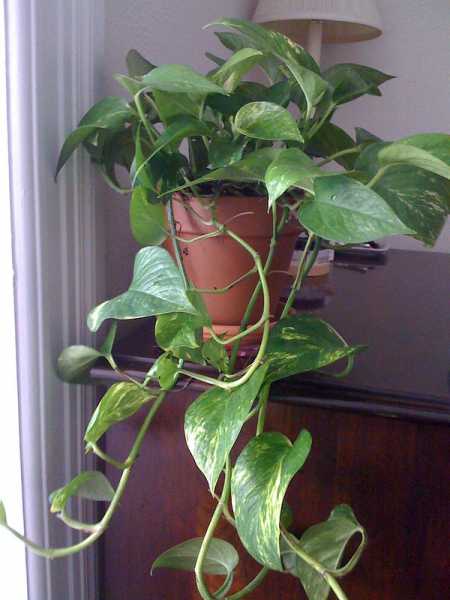With their rich green leaves and interwoven trunks, Money Trees (PachiraAquatica) are a pleasure to see. Many folks consider that the lovely plant offers good luck and prosperity, however, if the money plant leaves turning yellow, you could disagree. Fortunately, this post will assist you in repairing your tree and allowing it to grow once again.
Why are Leaves on My Money Tree Turning Yellow?
Money plants (PachiraAquatica) are endemic to South and Central America, where they may reach heights of 60 feet in the field! Several domestic Money Plants, on the other hand, are tiny decorative houseplants with delicate stems entwined together and rich green palmate foliage.
Though the Money Tree is often a low-maintenance and tolerant tree, its leaves becoming yellow is indeed a warning that things are wrong. When you truly care about your Money Tree, you must determine the source of the issue and take quick action to correct it.
Let’s take a look at each issue one by one and see how we can assist you to cure your tree:
Pests
Pest invasions are more likely in the Money Plant that is fragile or distressed. Spider mites as well as other sap-sucking insects can dehydrate your tree. Yellowing leaves and spines are the first signs of this issue. Scales, mealybugs, or spider mites are all common indoor pests.
These tiny bugs multiply and migrate all over the front sections into corners and crevices if not eliminated early enough. The parasites’ penetrating mouths deplete your plants and hasten to yellow, particularly if the Money Tree has been sickly due to inadequate sunlight, nutritional inadequacy, or insufficient moisture levels.
What Can You Do About It?
You must check your plants for symptoms of bugs frequently. If insects are discovered, the afflicted plant must be isolated as soon as possible. Washing the plant’s leaves to eliminate as many pests as feasible ought to be the preliminary stage. After that, you may try to remove the infection altogether by using another remedy to lower the population even more.

Soil pH Irregular
If you’re cultivating pot plants while using quality plant fertilizers daily, soil pH isn’t likely to be the source of your tree’s yellow foliage. However, if your foliage issue is limited to landscaping plants, pH value may be the answer.
Plants’ ability to acquire nutrition is influenced by the pH of the soil. Just as the soil pH rises or falls, so do the levels of nutrients. Soil pH in the moderate to mildly alkaline range, approximately 6.0 to 7.0, is ideal for most vegetation, even yard grass. Rhododendrons as well as blueberries, for example, demand soil with a pH of 4.5 to 6.0.
Certain nutrients will be less accessible to a species when soil pH drifts below or beyond its optimum range. Plants can’t pick up nutrition, even if they’re present — although if you apply fertilizer. Till pH problems are addressed, leaves become yellow.
A basic soil test may determine the pH of your topsoil as well as give other valuable knowledge. Many testing labs also make suggestions for pH-balancing soil fertilizers. As a result, nutrition is accessible again, and leaves resume their normal course.
Also Read: How to Use Coffee Grounds for Pothos?
Natural yellowing can be expected.
Is there fresh vegetation on your Money Plant? Such yellowing is normal if your tree has fresh foliage and the yellowing leaflets are mature, especially towards the base of the plant. Your tree loses its dead leaves to make room for new production.
Overwatering
Money plants (PachiraAquatica) thrive in moist environments and thrive provided their ground is maintained somewhat damp. Being overly careful with hydration is among the most prevalent causes of yellow foliage on a Money Plant.
Look for the withering of the plants and widespread yellow leaflets, especially on the bottom leaves even though the soil is damp. Once root rot has occurred due to overwatering, you might notice a decaying odor in the topsoil.
Overwatering is triggered by everything that keeps the soil moist for an extended period, not only by irrigating too regularly. Overwatering can culminate in an ill Money Plant with yellow foliage attributed to the below aspects:
- Growing in a container that doesn’t have any drainage openings
- Putting in an overly big container.
- Too much watering before allowing for the upper 1-2 inches of topsoil to become dry
- After feeding, not dumping the dispenser or cachepot.
- Gardening in soil with inadequate drainage.
- Failing to cut back on spraying during the wintertime or in cooler weather.
When your Money Tree is overwatered for an incredible duration, the extra moisture will destroy the root, causing it to perish.
What Can You Do About It?
When your Money Plant is fading and also has yellow foliage, even though the ground is damp, perform the following:
- Stop spraying when the topmost couple inches of ground is fully dry.
- Ensure your plant is really in the right container with the right soil.
- Look for signs of rot disease. To check the roots, one will need to carefully remove the plant out from the container.
- If root rot is evident, cut off all the damaged roots, rinse away the existing soil, and gently replant in a new container with new soil.
When your money plant’s soil dried out, that’s the main determinant that it requires to be watered. Feed your vegetation regularly rather than on a timetable, and inspect the plant as well as soil to see whether it needs to be watered.
Also Read: How to Get Rid of Bugs on Jade Plants?
Underwatering
Many potted plants exhibit common characteristics when they are overwatered or underwatered. Underwatering differs in that the topsoil would be dried, as well as the yellow, withered foliage will seem dry and crunchy. Because there is no water in the container, it will seem lightweight.
This might occur if the Money Plant’s water needs rise, like during extreme heat and when it is rapidly expanding. This can also occur if you neglect to water the tree if the container is extremely tiny, or when the tree becomes root bound.
What Can You Do About It?
Only one method to keep your Money Plant nourished and healthy is to increase the rate of feeding. Make an effort to maintain the soil hydrated in all situations. Take into account repotting the Money Plant to a little large container when the one that’s in is too tiny or has several roots coming out from the base.
Also Read: Overwatered Peace Lily: Signs & How to Revive Peace Lily
Soil with Poor Drainage
Inadequately draining soil is a typical source of root rot in Money Trees, which results in leaf reduction, yellow foliage, and, in extreme cases, extinction. Soil drainage would be reduced if you use the incorrect planting soil or maybe a container with insufficient drainage holes. A big pot will keep the soil moist for an extended period, enhancing the danger of root rot.
What Can You Do About It?
If you would like your Money Tree to remain strong and grow you’ll need well-draining ground. If you’re utilizing a pre-made potting mixture, apply additional drainage supplements to the topsoil, like perlite, coarse sand, even pumice. Nevertheless, you may simply manufacture your custom potting mixture to suit your species’ needs.
When watering your Money Tree plants, make sure the water drains swiftly via the container instead of collecting on the surface of the soil. Ensure there are enough drainage outlets in the container, and allow it to drain completely after feeding.
Fertilizer
Some people incline to fertilize their houseplants excessively. Money trees, on the other hand, require only a tiny portion to survive. During the hotter months of the year, everything you have to do is apply a healthy, all-purpose fertilizer. monthly, administer this solution gently.
Putting your income to plant a truckload of fertilizer will not cause the plant to develop faster. Rather, it might result in leaf burning, yellowing, light-colored foliage, or perhaps even the loss of your tree under the worst situation. Whenever it concerns money trees and fertilizer, it’s wise to offer far less rather excessively much.
What Are the Consequences of Yellowing Foliage on Money Plants?
- Root rot may occur if you overwater your plants or just don’t enable them to drain properly after irrigation.
- The initial indication of root rot is fading leaves. Root rot is a disease that, when not treated promptly, will destroy your plants.
- If you place your plant in the bright sun, it will scorch. Putting it in extremely dark areas can impede its development and eventually lead it to perish. Money plants need indirect, strong sunlight, but may tolerate low illumination levels as provided it is not darkish.
Conclusion
Perhaps, this post has given you some food for thought regarding why your Money Plant possesses yellow foliage. It is critical to explore all alternatives to solve the correct issue. It’s usually best to start with the greatest prevalent issues, like overwatering and sunlight issues. Then evaluate every one of the remaining concerns.
Remember that often several circumstances are to blame, therefore it might be time to start making a few changes to enhance circumstances for your vegetation.
